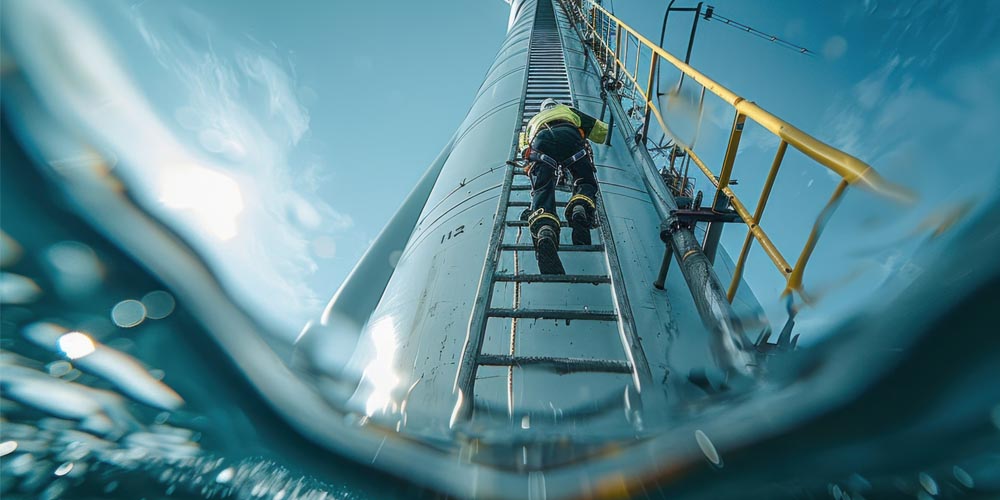
Underwater Repair & Maintenance
Underwater repairs can be performed in several ways, depending on the type of infrastructure, the type of damage, and the depth of the work area. Here are some of the most common methods:
1. Diver-Based Repairs
- Visual Inspections: Divers conduct visual assessments of underwater structures to check for cracks, leaks, corrosion, or other issues.
- Minor Maintenance: Divers can perform tasks such as replacing seals, tightening bolts, cleaning surfaces, or replacing parts like anodes or valves.
- Underwater Welding: Professional divers can perform underwater welding to repair steel or other materials, particularly on ship hulls, offshore platforms, or pipelines.
- Epoxy Repairs: Divers can apply specialized underwater epoxy compounds to seal cracks, repair leaks, or provide corrosion protection.
Limitations: Diver-based repairs are typically limited to shallow waters (up to around 300 feet) due to safety concerns and the physical challenges involved in deep-water diving.
2. ROV-Based Repairs (Remotely Operated Vehicles)
- Inspection & Diagnostics: ROVs equipped with high-definition cameras and sonar can be used to assess the damage to underwater structures and perform diagnostics remotely, helping to pinpoint issues that may require repair.
- Tool Manipulation: Some ROVs are equipped with robotic arms or manipulative tools to perform tasks like cutting, welding, sealing, or even replacing parts in underwater environments.
- Laser Scanning & Measurement: ROVs can also be fitted with advanced measurement tools to inspect the geometry and condition of structures, ensuring that repairs are performed accurately.
Advantages: ROVs can work at greater depths and in more hazardous conditions than human divers. They are also more flexible for performing tasks in difficult-to-reach places.
3. Underwater Welding
- Dry Welding: This method involves creating a dry environment around the weld area, usually through a welding chamber or hyperbaric chamber, to prevent water from interfering with the weld.
- Wet Welding: Wet welding is performed directly in the underwater environment using special electrodes and welding equipment. It’s less common than dry welding but is more cost-effective for smaller repairs.
Applications: Underwater welding is commonly used for repairing metal structures like pipelines, ship hulls, offshore oil rigs, and subsea equipment.
4. Concrete Repair and Coatings
- Concrete Sealing: For underwater concrete structures like foundations or platforms, cracks and holes can be sealed using specialized underwater concrete or resin. This method helps prevent water infiltration and further degradation.
- Protective Coatings: Underwater structures often require protective coatings to combat corrosion, wear, and marine growth. Specialized coatings are applied to metal, concrete, or other materials to extend their lifespan.
5. Remote Monitoring & Diagnostics
- Automated Diagnostics: With advanced sensor technologies, including fiber optics, ultrasound, and acoustics, remote monitoring systems can assess the condition of underwater assets in real time. These systems can detect potential failures before they become critical, allowing for proactive maintenance.
- Autonomous Underwater Vehicles (AUVs): For deep or large-scale inspections, AUVs can be used to survey underwater infrastructure, collect data, and identify areas needing repair, reducing the need for human presence in potentially hazardous environments.
